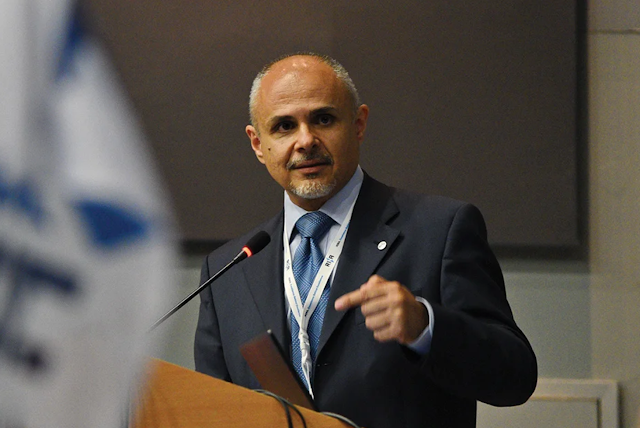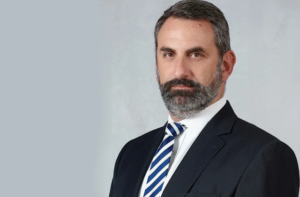| Spyridon Zolotas, Marine South EMEA Region Senior Director, RINA |
Meeting the targets set within IMO 2030 and 2050 is a challenge, that’s a fact. But it is a challenge that can be won by the industry, which is already making visible and effective efforts to be on the right path.
However, shipowners are uncertain of which choice to make, they must plan their investments today, based on technologies that are very innovative and sometimes even pioneering. As the decarbonization program advances, they might need to make choices outside the norm, but if we are to meet these goals, we need to be more and more proactive.
The challenge needs to be addressed on all fronts: new fuels, new technology, and new ways of operating.
We need to develop now if we are going to meet targets in the future, but, as we progress, we need to ensure solutions are both practical and sustainable. Some solutions are not yet ready for deployment: for example, there is not a ready supply or supporting infrastructure to move to green hydrogen or ammonia bunkering today. This is where dual fuel solutions and biofuels present an excellent opportunity for transition and to stay on track with the IMO 2030 and 2050 targets. LNG also presents an interim option with lower emissions than fuel oil and opens a pathway to possible future synthetic or biofuels.
When it comes to new fuels and technology, it is more difficult to predict the outcome for the future. Hydrogen and fuel cells will certainly play a part as a global energy vector and RINA is already certifying hydrogen powered trains. Ammonia, methanol and carbon capture and utilisation (CCU) also all have potential to bring the industry towards net zero. However, winning fuels and technology for the future will depend heavily on the approach of other market sectors. CCU technology has an important role to play while we transition to new fuels. Captured CO2 has the potential to be used in industrial processes, to create synthetic fuels or blue hydrogen, or to be pumped and stored in old underground oil wells.
In the light of the above, RINA has been working with the industry on a new dual fuel LNG/hydrogen engine propulsion arrangement, which was given a first approval in principle for an MR tanker designed by FKAB, for a VLCC designed by SWS and, at the end of last year, has signed a joint development project with Maran Dry Management Inc. for an LNG and hydrogen powered 210,000DWT bulk carrier. The propulsion arrangement is based on combining the ship’s fuel (LNG) with steam to produce hydrogen and CO2, which is captured from the LNG molecules before the combustion in the engine takes place, rather than from exhaust gas emissions.
LNG alone produces lower emissions than fuel oil. By combining it with the ability to use increasing percentages of hydrogen over time, owners have a propulsion solution they can use today using proven technology without the need for onshore hydrogen infrastructure. Furthermore, this design involves overall lower mass flows, therefore a reduced space required, and the scalable installation allows to progressively keep up with the pace of the emissions reduction requirements up to 2050. The vessel, therefore, can be built today as an ordinary dual fuel ship, and the extra equipment installed once regulations incentivize the investment.
Selecting this dual fuel LNG/hydrogen option presents many benefits to shipowners today and into the future. It means they can invest in new vessels with confidence that they will meet IMO 2050 in the future without reliance on investment in new onshore infrastructure, requiring only existing LNG bunkering facilities. Engines are directly powered with hydrogen and LNG, with increasing percentages of hydrogen used over time to maintain the ship’s CII rating. It will also aim to reduce the resistance of the ship to increase overall operational efficiency.
Other practical areas that will reduce emissions today include speed reduction (slow steaming), although we still need to understand the impact of this on supply and demand, and, of course, digitalization. As ships become increasingly digitalized, we understand more and more about fleet performance, the impact of measures taken to reduce emissions, ‘best practices’ to optimize efficiency, and support for investment decisions. Indeed, going forward, reliable data will be required for efficiency ratings.
Slow steaming can be combined with other actions such as reducing friction, through improved hull hydrodynamics and technologies that will be widely available in the future such as bubble systems, or wind assistance. Additionally, advancing digital fleet monitoring and management solutions offer a current solution to increase the efficiency of ship operations. Digitalisation will also be an important tool for monitoring fuel consumption and efficiency levels, ensuring data reliability for efficiency ratings, and providing vital intelligence for investment decisions; optimizing routes and bunkering stops will also naturally reduce emissions.
One of the biggest challenges in decarbonizing shipping is knowing which technologies and new fuels will be the ‘winners’ for the future. No one has a crystal ball, and owners looking to invest in new builds today need to choose solutions that are practical and economically viable. Institutional stakeholders should try to guide owners with a common approach, make pathways clearer, and give proper incentives.
Regulations will develop, along with market implements, such as emissions trading. Using the Carbon Intensity Index (CII), ships will be ranked and rated according to efficiency. Fleet ratings will influence market competitiveness, as big organisations committed to faster routes to net zero select more efficient shipping options. Insurers and bankers will also favour greater efficiency, and the ESG link to finance will mean bonds and lines of credit will offer greater awards to vessels with lower emissions.
Other industries will help us with ideas and confidence in the direction to take, which is why RINA’s business units across marine, infrastructure, industry, energy and certification are working closely together to recognise transferrable technology and ideas. We are also looking at new technology safety and risk assessments even before the development of prescriptive rules.
Conclusions
We do not know what fuels or technologies will become winning options for the future. Hydrogen will almost certainly play a part as an energy vector and may even open new opportunities for shipowners with the need to transport hydrogen or ammonia. Fuel cells, which run on methanol or hydrogen, will also likely be a part of future ship designs. Additionally, and beyond shipping, carbon capture technology will be needed if we are going to meet climate change targets as a whole. The industry cannot stand still and solutions through transitioning and immediately viable fuels/technologies need to be pursued.














